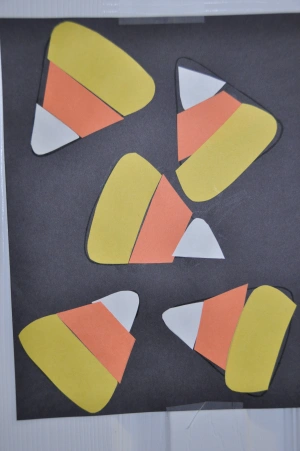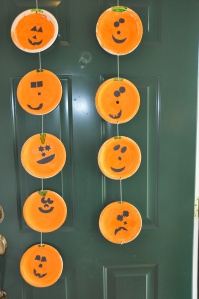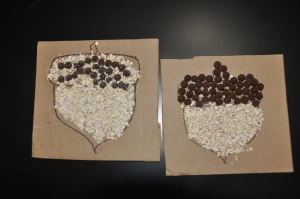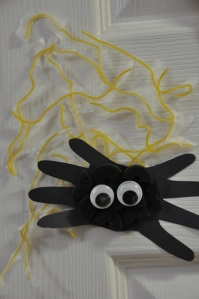I thought I would include how I plan our weekly activities. Organization is not my forte. I love it but have a hard time sticking with it. Hence, even these simple plans don’t get written each week. Some weeks I’m more in the mood for sponteneity, another one of my loves! So we now pretty consistently go back and forth between weeks (or days) of planned activities to weeks (or days) of sponteneity.
When I write out the weekly activities, I know that they probably won’t all get done. I don’t feel a need to stick to the plan completely. If J’s especially interested in one activity, we keep at it longer and push other activities to a later date. If we wake up and the temps have dropped from 95 to 78, we throw all planning aside and go to the zoo (like today!). On an average week we get through half to two-thirds of the activities, though there are rare weeks where less is completed… and even rarer weeks where more is completed.
All that being said, planning something out really keeps me from letting him play with cars all day while I get distracted with other things. Cars are great (and J does get to enjoy them a little every day) but a little variety in our day is great for both of us too!
Onto an example schedule:

This particular example is probably from 16 or 17 months?? It is one of my earlier schedules. Back then I was more likely to fill in every box. Current schedules have more empty boxes! Note too that many of the activities planned are repeats; they are NOT all new for J. He doesn’t need 20 new activities each week. I would estimate that he gets 1-3 new activities every 2 weeks and even then sometimes “new” simply means mommy tweaked an old activity. It’s new in J’s eyes though!
LESSON: I first include the lesson to be focused on that day. There isn’t necessarily a specific time where I sit him down and teach him the meaning of “empty/full” but rather this row explains what I’m planning our lessons around for that day. I give him lots of opportunities to experience that particular lesson throughout the day. Our lessons may be letters, numbers, shapes, colors, concepts, Biblical/moral lessons, discipline training, physical actions, simple science, …
TT=Table time and Craft Time: We first started TT when J was around 13 months old. It’s basically an activity done at the table. Shocking name, huh! It typically focuses on hand manipulation and fine motor skills. I have since combined TT and Craft time and we typically do one OR the other, not both in one day. When we started I could easily fit both into the daily schedule because his attention span was shorter and activities didn’t last as long. Theytypically lasted 10-25 minutes each back then. Now they last 20-40 minutes, depending on the activity.
Game: If the activity has a certain end goal to accomplish yet isn’t done at the table, I call it a game. Typically these things combine gross motor skills and incorporate the lesson of the day.
Outside: I include this in my planning because otherwise we end up doing the same thing every day. Sometimes our outside activities incorporate the lesson of the day but often it is just my way of being sure I keep some variety!
Here’s a second example schedule, this one has lots more empty spaces! If I remember correctly, we didn’t get to any of Tuesday’s activities until the following week and I never did the Egg puzzles with him. We were either out of town that weekend or the whole day was planned for work and errands.

Overall the lesson plan takes maybe 5 minutes to complete. I have a list of overall goals that I refer to when choosing my daily lessons. (I’ll probably include a separate post on that). The chart I use is in PowerPoint. I cut and paste the previous week’s schedule and change out the lessons and activities. It’s not like I’m going crazy here 😉 Any prep for an activity is done 2 minutes before the activity begins, the night before, the morning of, or on rare weeks I’ll prep days before! Can you tell I’m quite flexible? 🙂 I do tend to have evenings where I’m in the right mood to prepare multiple homemade toys/activities for J to use in the upcoming weeks or months. Those nights I’ll spend 3+ hours prepping. Usually prep takes just a few minutes since most activities are repeats from weeks past.
So this is what works for our house. What works for you? I’d love to hear your ideas!
 I thought this would be a good activity to work on sizes. I prepped the activity by precutting the pieces, creating small, medium and large pieces si
I thought this would be a good activity to work on sizes. I prepped the activity by precutting the pieces, creating small, medium and large pieces si milar to candy corn. If you can tell in the picture, I also drew the outline of the candy corn on the black paper. This step probably wasn’t needed though. J glued the pieces in order (small, medium, large) to create the candy corn. I did have examples of candy corn out (since he’d never seen them before!). This was simple to prep and good practice for J.
milar to candy corn. If you can tell in the picture, I also drew the outline of the candy corn on the black paper. This step probably wasn’t needed though. J glued the pieces in order (small, medium, large) to create the candy corn. I did have examples of candy corn out (since he’d never seen them before!). This was simple to prep and good practice for J. We also used this same concept to create door knob hangars for J’s cousins. I precut the black paper, including the circle for the door knob and J decorated it with a smaller version of the candy corn puzzles and adding their name. Later I covered them with clear contact paper for durability. You could also use foam or cardstock if you didn’t want to “laminate” them.
We also used this same concept to create door knob hangars for J’s cousins. I precut the black paper, including the circle for the door knob and J decorated it with a smaller version of the candy corn puzzles and adding their name. Later I covered them with clear contact paper for durability. You could also use foam or cardstock if you didn’t want to “laminate” them. 











 Basically I give him a sponge and a bowl of water (a tiny bit of water goes a LONG way!). Oh and squeezing the excess water out of the sponge is a lesson they need to be taught! There are SO many tiny things that J needs to be taught that I completely overlook and this was one of them.
Basically I give him a sponge and a bowl of water (a tiny bit of water goes a LONG way!). Oh and squeezing the excess water out of the sponge is a lesson they need to be taught! There are SO many tiny things that J needs to be taught that I completely overlook and this was one of them. 





